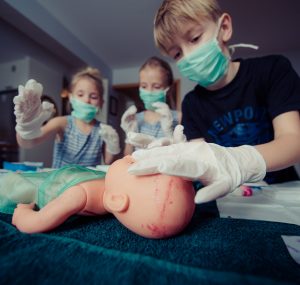
You do not require a doctorate degree to perform cardiopulmonary resuscitation (CRP). This can save the life of a person who experiences cardiac arrest because it doubles the chance that the person will remain alive until medical aid arrives. Everyone should know how to perform CPR correctly because, in the event of cardiac arrest, you have very little time to perform CPR. You will not have time to learn CPR on the spot; therefore, it is encouraged to participate in a first aid CPR course. Resuscitation must be performed while waiting for the ambulance. Therefore, you must be prepared for any unexpected medical situation. This article will focus on how to perform CPR correctly.
Know if the patient needs CPR
Before performing CPR, you have to take a few seconds to determine whether your patient needs CPR or not. When you find a person unconscious, immediately call the ambulance and, without wasting any time, start examining the patient to determine whether they are breathing or not. Shake the patient from the shoulders to check if the patient reacts or regains consciousness. Do not waste more than 5 seconds to try to wake up the patient. Lay the patient straight and check if they are breathing by tilting the patient’s head back. Check if they are breathing for 8 seconds. See if they have a pulse, and if they do not, you can start performing CPR.

The correct way to perform CPR
If your patient is not breathing, do not hesitate to perform CPR to resuscitate the patient. The following are the CPR steps which you have to perform if you are going to save someone’s life.
Chest compressions
The first step is to push the chest, but before performing this step, make sure the patient is lying on their back straight on a firm surface. The mistake people make while performing this step is they do not know the right position and the angle of their hand. To perform this step properly, you have to place the heel of your hand on the centre of the patient’s chest. After that, put the second hand on the first hand and interlock the fingers together. In this way, the patient’s rib cage will be protected.
Keep your arms straight, bend your knees, and lean forward to press down the patient’s chest. Make sure you press it down about two inches and then release the pressure and wait till the chest comes back. Repeat the compressions twice a second and do this step hard and fast. Take a normal breath in the mouth of the patient until the chest of the patient rises. After the breath, look at the chest fall and repeat this step five to six times. Repeat the chest compressions and breathing one after another. Follow the cycle of 30 chest compressions and two breaths. Keep repeating the process until professional aid or the ambulance arrives or if the person starts showing signs of consciousness. This includes breathing, coughing, or opening their eyes.
Breathing
Breathing is a critical component of CPR, and knowing how to administer rescue breaths can significantly improve the chances of saving a life. In injury management courses, individuals learn the importance of opening the airway by lifting the chin and pinching the patient’s nose before delivering a rescue breath. This technique ensures that the airway is clear so that the breath can be effective. In primary health care courses, students are also taught the significance of providing rescue breaths along with chest compressions in a systematic manner to maintain oxygen flow to vital organs.
In a nutshell, CPR is a crucial skill that can be learned through first aid and CPR courses. It is essential for everyone to know how to perform CPR correctly, as it can double the chance of survival for someone experiencing cardiac arrest. By quickly assessing the need for CPR, performing chest compressions, and administering rescue breaths, individuals can be prepared to respond effectively in emergency situations. Investing in first aid training can equip individuals with the knowledge and skills needed to save lives and provide critical care in various settings.




